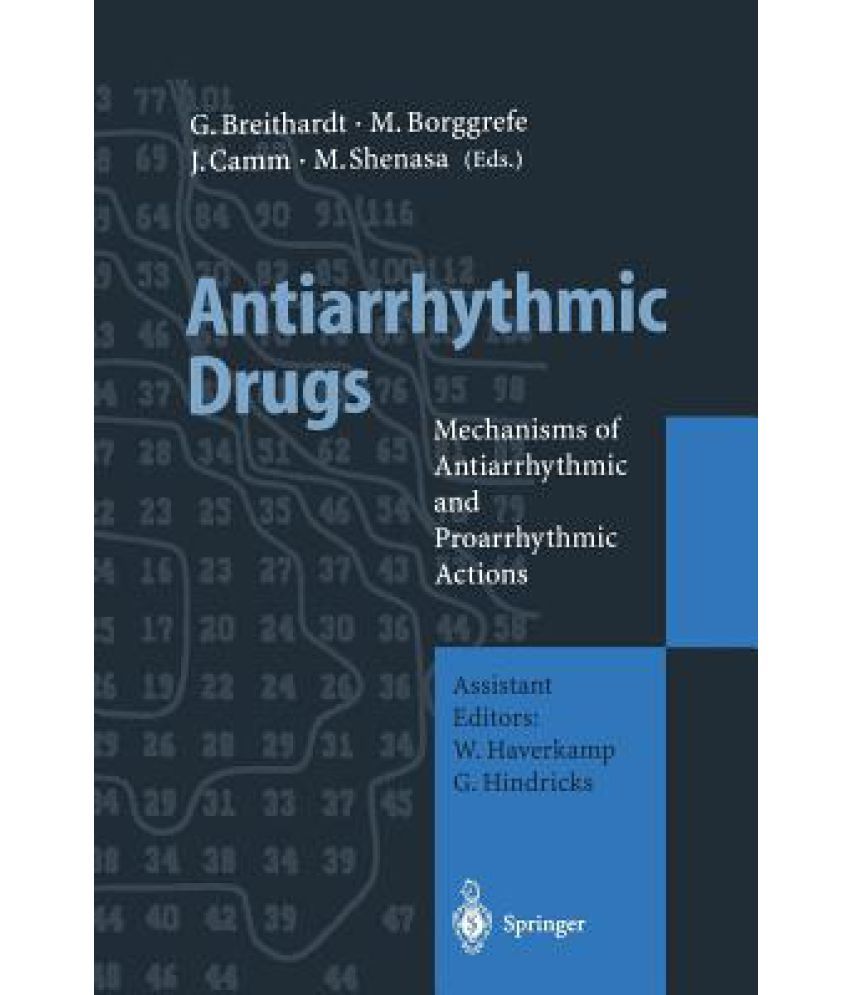Have a Question?
Get answers from experts and customers who have used this item.
Notifications can be turned off anytime from settings.
Item(s) Added To cart
Qty.0
Something went wrong. Please refresh the page and try again.
Something went wrong. Please refresh the page and try again.
Exchange offer not applicable. New product price is lower than exchange product price
Please check the updated No Cost EMI details on the payment page
Exchange offer is not applicable with this product
Exchange Offer cannot be clubbed with Bajaj Finserv for this product
Product price & seller has been updated as per Bajaj Finserv EMI option
Please apply exchange offer again
Your item has been added to Shortlist.
View AllYour Item has been added to Shopping List
View AllSorry! Antiarrhythmic Drugs is sold out.


You will be notified when this product will be in stock
| ||||||||||||||
Learn More about the Book
The past 10 years have seen a remarkable change in the approach to cardiac arrhythmias, from a position of confidence and a feeling of well-being about pharmacological treatment to a situation in which there is now marked uncertainty and general apprehension about the role of antiarrhythmic drugs. Until relatively recently the prevailing concept in antiarrhythmic therapy was that arrhythmias could be controlled by drugs which slowed conduction or suppressed automaticity, goals well served by the sodium channel-blocking drugs and glycosides. Drug re search was based largely on the development of agents mimicking those already available, but with greater efficacy, fewer side effects or a more favourable phar macokinetic profile. The CAST trial stands out as a landmark in the evolution of arrhytmia manage ment; rarely has a single trial had such a profound impact not only on clinical prac tice, but also on the whole approach of those involved in the research, development and regulation of antiarrhythmic drugs. The results of the CAST trial, designed to redress the shortcomings of earlier trials which had failed to demonstrate the anticipated improvement in mortality post-myocardial infarction with the use of class I agents, are well known. The CAST and CAST II showed an increase in mor tality associated with the active agent (encainide, flecainide or morizicine) com pared to placebo treatment. They firmly established the potential danger in the use of class I drugs."
On the Back Cover
Management and prevention of tachyarrhythmias, especially of serious ventricular arrhythmias after myocardial infarction, is still a major problem. Large-scale evidence suggests an increased harm induced by antiarrhythmic drugs in the presence of organic heart disease although they effectively suppress spontaneous arrhythmias. This increased risk has been linked to their proarrhythmic potential and to possible interactions by ischaemia. However, the mechanisms by which antiarrhythmic drugs exert their antiarrhythmic and proarrhythmic actions are still poorly understood. Therefore, it was a time to present an update on the mechanisms of antiarrhythmic and proarrhythmic action of drugs which act on the electrophysiological properties of the heart. World renowned electrophysiologists as well as clinicians have joint to address important topics which range from the effect of antiarrhythmic drugs on single channels and on arrhythmia models to the clinical arena.
The images represent actual product though color of the image and product may slightly differ.
Snapdeal does not select, edit, modify, alter, add or supplement the information, description and other specifications provided by the Seller.
Get answers from experts and customers who have used this item.
Sorry! There was a problem while submitting your answer. Please try again in sometime.
Sorry! There was a problem while submitting your question. Please try again in sometime.
Please note that all the submitted posts are moderated and it may take 3-5 business days for it to appear on the site.
Register now to get updates on promotions and
coupons. Or Download App